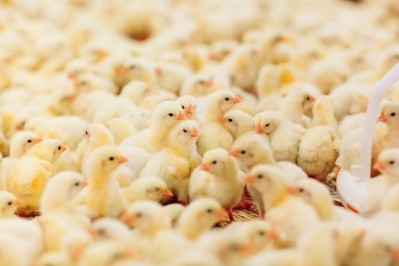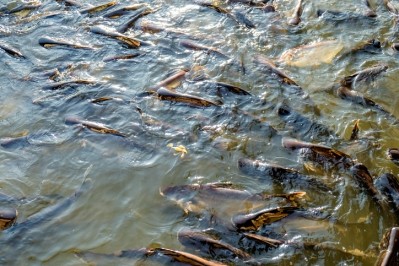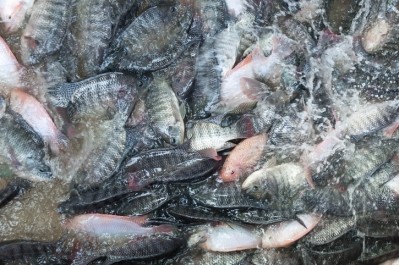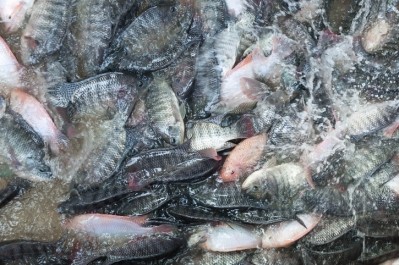Grape pomace may support farmed fish facing disease challenge
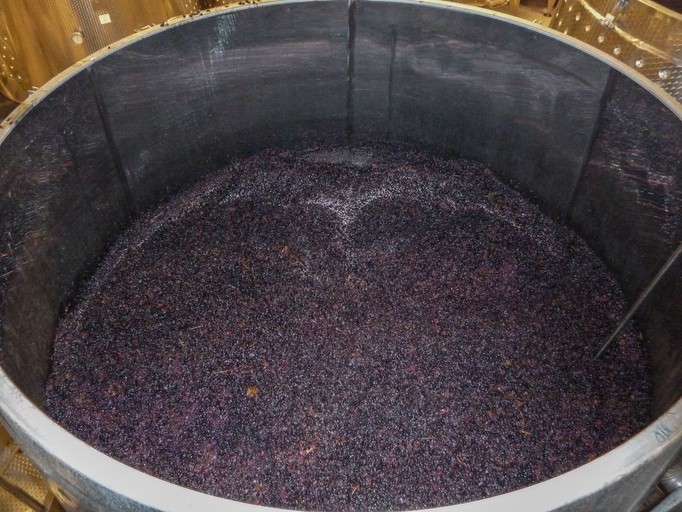
A team of researchers from the Federal University of Santa Maria and the State University of Santa Catarina in Brazil explored the use of grape pomace flour (GPF) in the diets of farmed grass carp facing a disease challenge. The researchers published details about their work in the journal, Aquaculture.
“The aim of this study was to evaluate whether dietary supplementation with GPF is able to reduce or prevent the impairment of cellular energetic homeostasis in grass carp experimentally infected by P. aeruginosa,” the researchers said.
The researchers found that adding 300mg of grape pomace flour/kg of feed could ease the activities of branchial creatine kinase (CK), adenylate kinase (AK), pyruvate kinase (PK) and lactate dehydrogenase (LDH) compared to other infected fish but results were not the same as those in the non-infected control group.
However, the GPF supplement did prevent alterations from oxidative damage stemming from the disease, the researchers said.
“The use of 300 mg of GPF/kg of feed exerted protective effects on branchial energetic metabolism linked to ATP metabolism by reducing the impairment in cellular energetic homeostasis; its effects can be mediated by the prevention of SH group oxidation,” they added.
Aquaculture and disease
Aquaculture production is a rapidly expanding industry with an average growth rate of 5.8% from 2000 to 2016, the researchers said. By 2016 it generated about 80m tons of food fish.
However, the reliance on intensive farming practices to meet demand has sparked outbreaks of several pathogenic organisms including Pseudomonas aeruginosa, they said. The gram-negative bacterium is a common pathogen found in both freshwater and marine-based aquaculture and related to the “red skin disease,” which affects several species including Nile tilapia, Mozambique tilapia, silver catfish and the grass carp.
The disease is characterized by skin darkness, ascites, gill rot, petechial hemorrhage and exophthalmia, they said. “The gills are the organ most affected by P. aeruginosa infection, which has been observed to cause severe destruction of primary and secondary lamellae, edema, hyperplasia, telangiectasia, and desquamation,” they added.
In fish, the phosphoryl transfer system plays a part in the coupling of the adenosine triphosphate (ATP) production and consumption, the researchers said. The process is fundamental to the “bioenergetics and homeostasis” of organisms.
“The enzymes creatine kinase (CK), adenylate kinase (AK), and pyruvate kinase (PK) have been linked to efficient high-energy phosphoryl transfer and signal communication in the cell to maintain the energetic balance,” they said.
However, P. aeruginosa infection is thought to hinder cellular energetic homeostasis by downregulating the activity of enzymes involved in the phosphoryl transfer network in the gills of infected fish, they said. That interaction adds to the “disease pathophysiology.”
“Impairment of CK, AK and PK activities elicits a rapid fall in global ATP concentrations during P. aeruginosa infection, which contributes directly to the pathogenesis of disease and fish mortality,” they said. “In this sense, the search for treatments that reduce or prevent alterations of the phosphoryl transfer network could be considered a suitable approach to avoid this situation and consequent fish mortality.”
Why use grape pomace flour in aquaculture diets?
Using plant-based or “natural” additives like essential oils has been a more recent approach to preventing or limiting bioenergetic dysfunctions linked to an impairment in the phosphotransfer network, the researchers said.
Grape pomace flour is a bio-residue from wine production, they said. It has “potent immunomodulatory effects” on the immune function of grass carp infected with P. aeruginosa, which appears to be linked to resveratrol (RSV).
“In this regard, Bottari et al. (2015) revealed that RSV was able to avoid the inhibition of brain CK and AK activities during toxoplasmosis, abolishing the energetic imbalance between ATP-production and ATP-utilization,” the researchers said.
“Our hypothesis is that the use of GPF can reduce or prevent the branchial impairment of cellular energetic homeostasis elicited by P. aeruginosa infection,” they added.
Feeding trial details
During the feeding and disease challenge trial, 120 juvenile fish received one of three diets, the researchers said. Fish were acclimated for 10 days, received the trial feed for 60 days and then half of the fish were injected with a strain of P. aeruginosa.
The diets included a control diet and that diet with two levels of additive GPF at 150mg or 300mg/kg, they said. The GFP used was commercially available and the chemical composition of the GPF was checked.
“The animals were divided into six groups (A-F, n = 6 per group, in triplicate) as follows: groups A and D received the basal diet (without GPF supplementation), groups B and E received a diet containing 150 mg of GPF/kg of feed, while groups C and F received a diet containing 300 mg of GPF/kg of feed,” the researchers said. “After 60 days, groups D to F were experimentally infected.”
Fifteen days post-infection, a selection of fish was collected, and their branchial tissue was collected and checked for “oxidative-stress related parameters measurements,” they said. The homogenates for “phosphoryl transfer network measurements” also were analyzed to check AK, PK and cytosolic and mitochondrial CK activity.
Lipid peroxidation, non-proteic (NPSH) and proteic (PSH) thiols were measured along with branchial CK, AK and PK activity, they said. Branchial levels of reactive oxygen species (ROS) and protein and lipid peroxidation were established and an MTT assay was completed.
Results
The researchers found an interaction between the infection and use of the GPF supplement on branchial cytosolic and mitochondrial CK activity. CK activity fell in infected fish compared to non-infected fish while infected fish on the 300mg supplemented feed saw improved activity.
“Infection caused by P. aeruginosa PA01 causes branchial bioenergetic dysfunction in grass carp, as observed in the gills of silver catfish experimentally infected with this bacterium,” they said. “The most important finding revealed in the current study is that dietary supplementation with 300 mg of GPF/kg of feed ameliorates the activity of enzymes belonging to the phosphotransfer network, which may contribute to efficient intracellular energetic communication between cellular ATP synthesis and consumption.”
“Also, this ameliorative effect on phosphotransfer network appears to be linked to protective effects against oxidative damage,” they added.
Infected fish receiving the 300mg supplement also had improved responses for branchial AK and PK activity compared to infected fish, but the activity level was not as high as control group fish, the researchers said. Branchial LDH was higher in infected fish than in fish in either the control group fish or infected fish on the 300mg diet.
Branchial TBARS and ROS levels were increased in infected fish but both non-infected fish and those on the 300mg diet avoided the increase, they said. Infection also increased branchial lipid oxidation (LOOH) levels for fish while the 300mg supplement reduced the increase.
Branchial protein carbonylation levels increased in infected fish, they said. Adding, “Supplementation with 300 mg GPF/kg feed (group F) avoided the increase of branchial protein carbonylation levels in fish experimentally infected by P. aeruginosa, and levels were similar to the control group (group A).”
Branchial NPSH and PSH levels dropped for infected fish compared to control group fish, they said. However, adding 300mg of GPF allowed fish to avoid the drop.
Source: Aquaculture
Title: Grape pomace flour ameliorates Pseudomonas aeruginosa-induced bioenergetic dysfunction in gills of grass carp
Authors: M. Baldissera, C. Souza, S. Descovi, C. Verdi, C. Zeppenfeld, A. da Silva, R. Santos, B. Baldisserotto
DOI: doi.org/10.1016/j.aquaculture.2019.03.065
